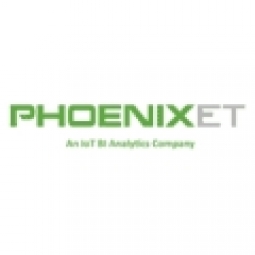
Technology Category
- Functional Applications - Enterprise Resource Planning Systems (ERP)
- Sensors - Haptic Sensors
Applicable Industries
- Buildings
- Utilities
Applicable Functions
- Facility Management
- Maintenance
Use Cases
- Building Automation & Control
- Remote Control
Services
- System Integration
The Customer
Not disclosed
About The Customer
The customer is a national grocery retailer operating over 1,900 stores across 20 well-known banners throughout the United States. The customer is committed to reducing their energy consumption and carbon footprint, and has publicly pledged a series of energy commitments to this end. They faced a complex challenge due to the multiple divisions, disparate building management systems, and a large variety of hardware in their portfolio. Despite these complexities, the customer was determined to find a solution that would provide real-time visibility into their systems, achieve energy reductions, enable proactive maintenance, validate energy savings, and integrate multiple IoT data points into a centralized platform.
The Challenge
The customer, a national grocery retailer with over 1,900 stores across 20 well-known banners, was facing a significant challenge in centralizing energy management due to the multiple divisions, disparate building management systems, and a large variety of hardware in their portfolio. The customer had a series of public energy commitments aimed at reducing their carbon footprint. They required a solution that would provide real-time visibility into the performance of their refrigeration, HVAC, and lighting systems at the equipment level across their enterprise. They also needed to achieve energy reductions that would meet corporate ROI requirements, proactive maintenance processes on identified energy and building efficiency opportunities, the ability to validate energy savings through a Measurement & Verification (M&V) process, and the ability to integrate multiple IoT data points into one centralized platform.
The Solution
PhoenixET provided a solution by integrating their Enterprise Data Xchange (EDX)® with Building Intelligence (BI) reporting across all the customer's locations and divisions. They also set up a management process to work through orders/dispatches on opportunities identified through Phoenix's energy control measures (ECM), where remote fixes were not possible. The solution aimed to reduce energy consumption through specific ECM strategies, including Suction Float Optimization, Discharge Float, High Defrost, VFD, and Corporate Compliance. The EDX platform also enabled the customer to apply for millions of dollars in energy efficiency incentives provided through utility programs.
Operational Impact
Quantitative Benefit

Case Study missing?
Start adding your own!
Register with your work email and create a new case study profile for your business.
Related Case Studies.

Case Study
IoT Solutions for Smart City | Internet of Things Case Study
There were several challenges faced: It is challenging to build an appliance that can withstand a wide range of voltage fluctuations from as low at 90v to as high as 320v. Since the device would be installed in remote locations, its resilience was of paramount importance. The device would have to deal with poor network coverage and have the ability to store and re-transmit data if networks were not available, which is often the case in rural India. The device could store up to 30 days of data.

Case Study
Automation of the Oguz-Gabala-Baku water pipeline, Azerbaijan
The Oguz-Gabala-Baku water pipeline project dates back to plans from the 1970’s. Baku’s growth was historically driven by the booming oil industry and required the import of drinking water from outside of the city. Before the construction of the pipeline, some 60 percent of the city’s households received water for only a few hours daily. After completion of the project, 75 percent of the two million Baku residents are now served around the clock with potable water, based on World Health Organization (WHO) standards. The 262-kilometer pipeline requires no pumping station, but uses the altitude differences between the Caucasian mountains and the capital to supply 432,000 m³/d to the Ceyranbatan water reservoir. To the people of Baku, the pipeline is “the most important project not only in 2010, but of the last 20 years.”

Case Study
GPRS Mobile Network for Smart Metering
Around the world, the electricity supply industry is turning to ‘smart’ meters to lower costs, reduce emissions and improve the management of customer supplies. Smart meters collect detailed consumption information and using this feedback consumers can better understand their energy usage which in turn enables them to modify their consumption to save money and help to cut carbon emissions. A smart meter can be defined in many ways, but generally includes an element of two-way communication between the household meter and the utility provider to efficiently collect detailed energy usage data. Some implementations include consumer feedback beyond the energy bill to include online web data, SMS text messages or an information display in consumers’ premises. Providing a cost-effective, reliable communications mechanism is one of the most challenging aspects of a smart meter implementation. In New Zealand, the utilities have embraced smart metering and designed cost effective ways for it to be implemented. The New Zealand government has encouraged such a move to smart metering by ensuring the energy legislation is consistent with the delivery of benefits to the consumer while allowing innovation in this area. On the ground, AMS is a leader in the deployment of smart metering and associated services. Several of New Zealand’s energy retailers were looking for smart metering services for their residential and small business customers which will eventually account for over 500,000 meters when the multi-year national deployment program is concluded. To respond to these requirements, AMS needed to put together a solution that included data communications between each meter and the central data collection point and the solution proposed by Vodafone satisfied that requirement.

Case Study
Energy Saving & Power Monitoring System
Recently a university in Taiwan was experiencing dramatic power usage increases due to its growing number of campus buildings and students. Aiming to analyze their power consumption and increase their power efficiency across 52 buildings, the university wanted to build a power management system utilizing web-based hardware and software. With these goals in mind, they contacted Advantech to help them develop their system and provide them with the means to save energy in the years to come.

Case Study
NB-IoT connected smart meters to improve gas metering in Shenzhen
Shenzhen Gas has a large fleet of existing gas meters, which are installed in a variety of hard to reach locations, such as indoors and underground, meaning that existing communications networks have struggled to maintain connectivity with all meters. The meter success rate is low, data transmissions are so far unstable and power consumption is too high. Against this background, Shenzhen Gas, China Telecom, Huawei, and Goldcard have jointly trialed NB-IoT gas meters to try and solve some of the challenges that the industry faces with today’s smart gas meters.

Case Study
OneWireless Enabled Performance Guarantee Test
Tata Power's power generation equipment OEMs (M/s BHEL) is required to provide all of the instrumentation and measurement devices for conducting performance guarantee and performance evaluation tests. M/s BHEL faced a number of specific challenges in conducting PG tests: employing high-accuracy digital communications for instrumentation, shortening setup and dismantling time, reducing hardware required, making portable instrument setup, avoiding temporary cabling work and the material waste costs



